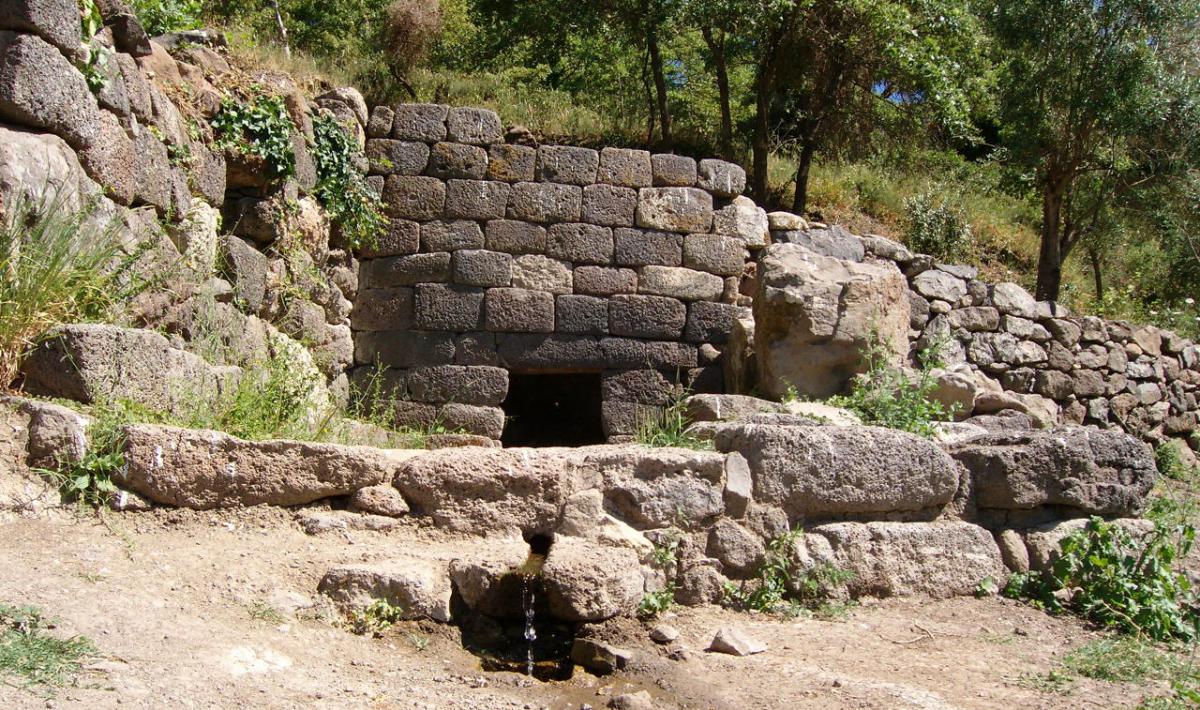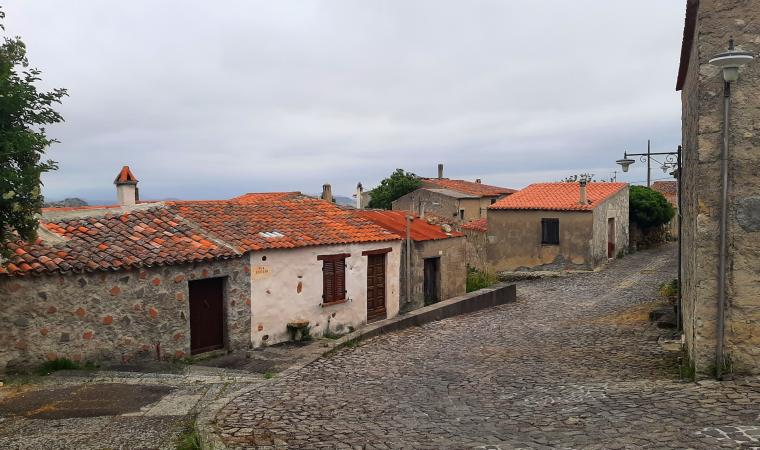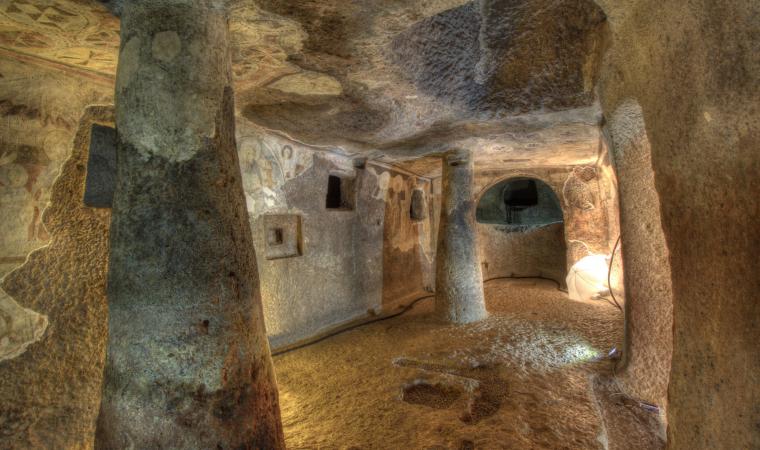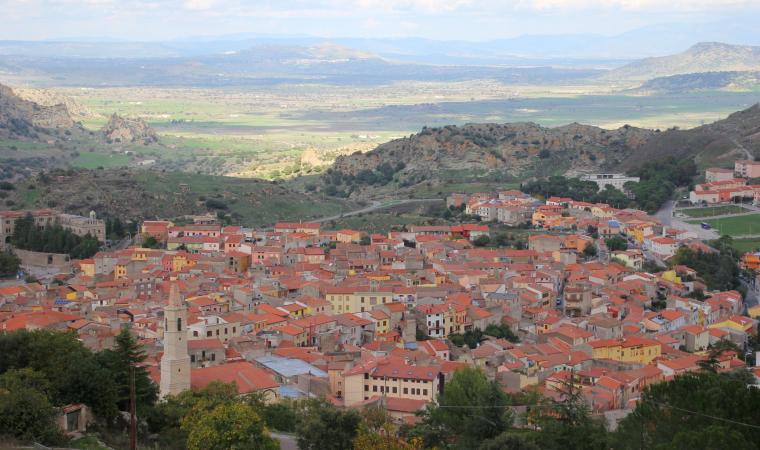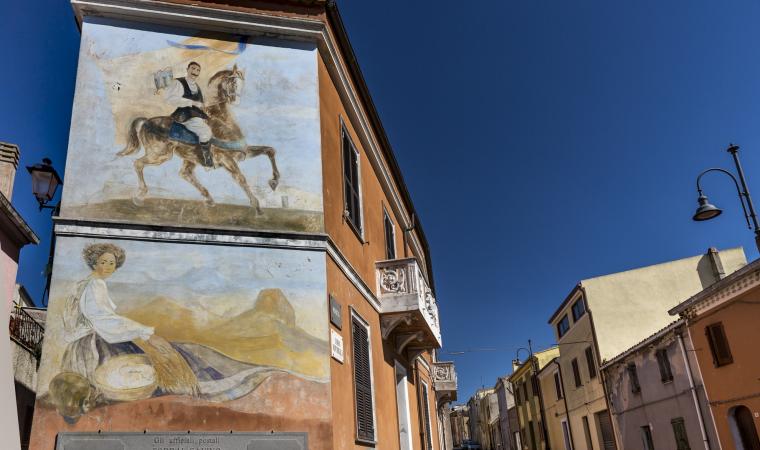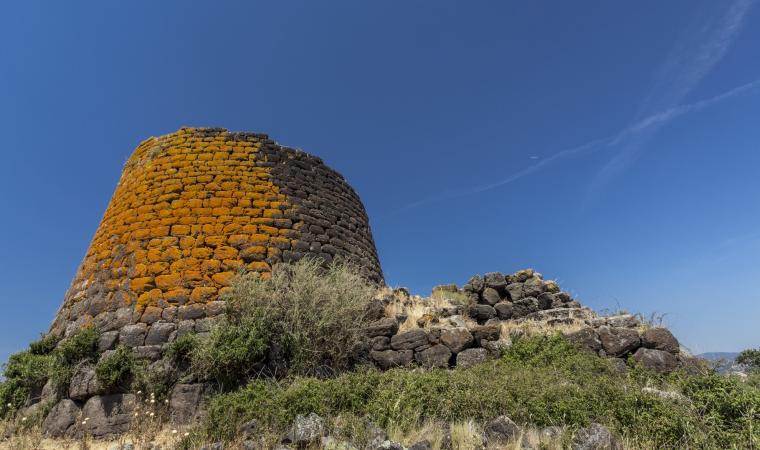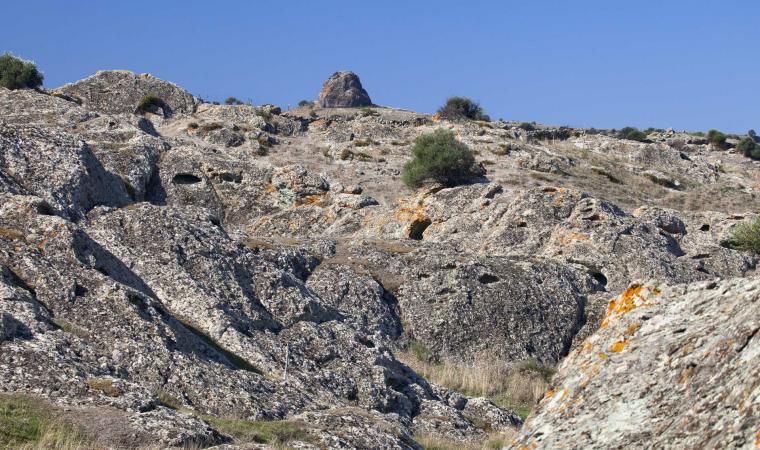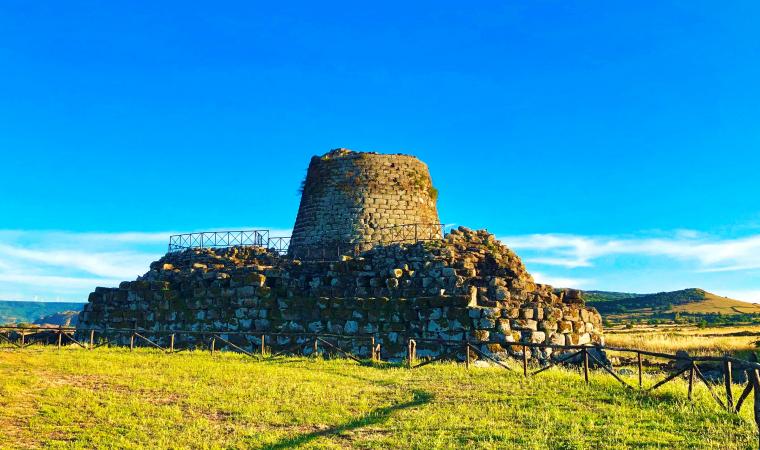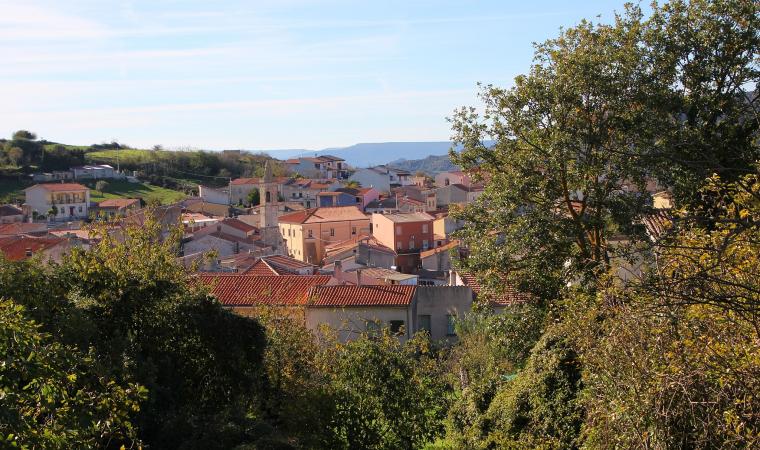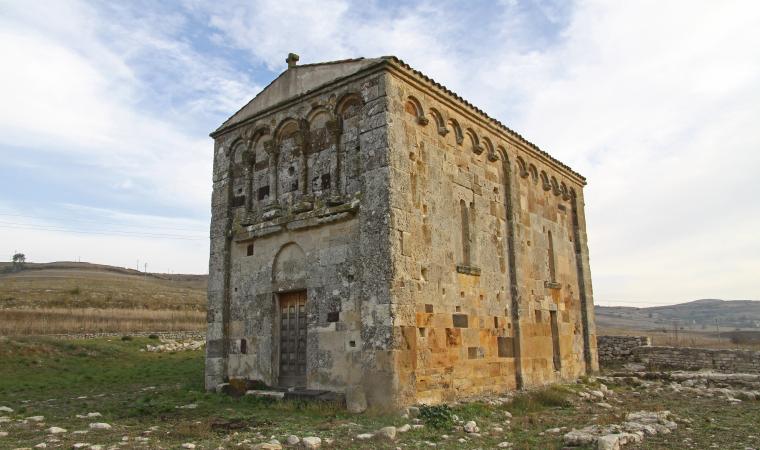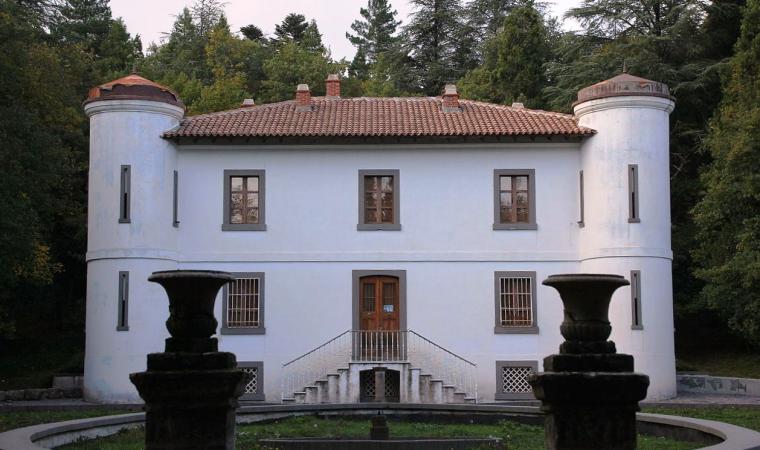It is small and well preserved and was carefully built over a spring that has been active for thousands of years and surrounded by a timeless landscape. In this scenario, you will find the sacred spring of Su Lumarzu, at the end of a path that unwinds from the very small medieval village of Rebeccu, on the edge of the Santa Lucia plain, in the Logudoro territory of Bonorva. The building consists of an atrium and a small cell, where the water that flows from the vein of spring water is collected. The rectangular atrium is paved and, inside it, you will notice bench-seats against the walls and a niche. The construction material used was basalt, with evenly-cut squared ashlars positioned in rows. Access to the cell is through a monolithic slab, onto which a trapezoid-shaped entrance opens up. The cell has a tholos roof, which ends with a horizontal slab on which a Latin cross was engraved - although it is not known with certainty when - and probably had the aim of ‘Christianising’ a place of pagan worship.
The pool, carved out the basalt rock, is shallow and circular in shape, reflecting the structure of the dome. There is never a shortage of water, that flows through a small channel, which you will notice in the threshold of the internal room, and then along a duct located under the flooring of the atrium.
The building dates back to between the Final Bronze Age (13th-10th century BC) and the Early Iron Age (10th-8th century BC) but was frequented at least until Late Antiquity, as shown by the coins found on site, which date back to the 4th century AD. The presence of high side walls, the niche and the benches in the walls of the atrium have led to the hypothesis that the temple was not only a place reserved for priests and that the benches were not only used - or at least not exclusively - for placing offerings on them, but that they may have been seats and other types of rituals may have taken place in Su Lumarzu. Perhaps even ordeals, meaning ‘sacred trials’, in which the person judged had to demonstrate their innocence before the divinities by undergoing tests with water or fire.
A visit to the spring is inevitably linked to a stroll through the cobbled streets of Rebeccu. You will be captivated by the restless atmosphere among abandoned houses, alleys, a small church and a deconsecrated cemetery. Speaking of churches, the Romanesque sanctuary of San Lorenzo di Rebeccu stands one kilometre from the village and was built from white limestone and black basalt ashlars. With a single nave and a wooden roof, it dates back to the second half of the 12th century, as shown by a seal of Judge Barisone II found inside it.

